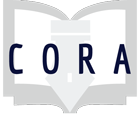A toolkit with various instructional materials to teach media and news literacy. Includes an online activity "Fairness and Blanace" where students watch a short video on journalistic standards and answer discussion questions. Then, students can take one or both interactive tutorials on "Lateral Reading" with a focus on fact-checking and/or "Evaluating Information" based on an information need.
ccaffrey
Primary tabs
Assignments Contributed
This lesson is designed for lower-division composition undergraduate students to learn frameworks for evaluating the audience and purpose of various information sources. After analyzing an array of sources for audience and purpose students can dig in to a source in more detail looking for markers of authority and discussing strategies for verifying claims.
This assignment was created for a credit bearing course for first year students. It's designed to help students take what they've learned about algorithmic bias from the course lectures and readings and apply it to their own search practices. They also critically analyze search results for advertisements and compare DuckDuckGo to Google.
This activity is designed to support teaching at the intersections of scholarly communication and information literacy. The choose-your-own scenario activity, designed in LibWizard, can be used in a flipped classroom setting or in a traditional classroom. The choose-your-own scenario activity is inspired by and adapts questions from: Hare, S. & Evanson, C. (2018). Information privilege outreach for undergraduate students. College and Research Libraries.
An introductory lesson to finding and understanding data in social sciences.
This group activity can be used in a variety of disciplines and contexts. Pass the Problem aims to have students provide feedback to other students on database and keyword selection. By having students critique each other it works to build critical self-reflection during the research process (it's also pretty fun!).
The following activity is meant to assist learning the concepts of strategic search. It introduces the idea that sources contribute different perspectives to an argument and that scholarship is a conversation. It can be used for any discipline but is particularly well suited to introductory writing courses.
Assignments Adapted
I was in a large class with a very tiny projector screen that we couldn't write on so I displayed the spectrum, provided a brief overview, and then in small groups students completed an accompanying paper handout. Students wrote the number of the corresponding item on their paper handout. This was an upper-division anthropology course on disability studies that is a general education course with a wide variety of research skills/needs and this was a great activity to open up discussion on types of sources and how we can use them. Here's a google doc link for the handout: https://drive.google.com/file/d/1JnsrwNmfzXZM_z8RqIQARgoCsehZezwR/view?u...
We've adapted this for a graduating senior workshop and incorporated the use of the Unpaywall plugin as well. Materials at: http://libguides.csudh.edu/foralumni
I drew heavily on this lesson plan as inspiration for a credit-bearing course assignment designed for first year students: https://www.projectcora.org/assignment/analyzing-search-engines-what-nar...
It was super interesting and very provocative discussion! Thanks Jacob for sharing!
I adapted this for a sophomore-level Linguistic Anthropology class analyzing article abstracts for an assignment. I provided students a modified handout focused just on the social science part with an example abstract from:
Sierra, S. (2016). Playing out loud: Videogame references as resources in friend interaction for managing frames, epistemics, and group identity. Language in Society, 45(2), 217-245.
Then students worked in small groups with example abstracts to go through the same highlighting process for research question/topic, methodology, and findings/conclusion. I had students do this in a Google Form: http://bit.ly/312armstrong
I've used a version of this assignment as well - it was a 2 session class, adding in a component where students had to find existing data (Pew, Social Explorer, etc.) and represent it visually to tell a potentially different story.
I adapted this for an upper-division evolutionary psychology class where students are familiar with basic searching but are beginning literature reviews for an in-depth research project. I changed the worksheet to a Google Form: https://drive.google.com/open?id=16t5pLBetTJfMGC_DC3StZdtAoYxJXQjBdV61_M... and shortened it due to time constraints. After each "part" of the google form we came back together for a class discussion - at the end of the class we had a wrap-up discussion using the survey questions.
I adapted this activity for a gender studies class. In this context we started with an important article provided by the instructor and then looked at which disciplines were citing the source. We compared citations in Google Scholar and Web of Science mapping function and discussed why there are differences between them.
Contributor Stats
| Total views | Adapters Count | Comment count | Document Downloads |
|---|---|---|---|
| 585 | 0 |
|
| Total views | Adapters Count | Comment count | Document Downloads |
|---|---|---|---|
| 1,952 | 0 |
|
| Total views | Adapters Count | Comment count | Document Downloads |
|---|---|---|---|
| 1,022 | 0 |
|
| Total views | Adapters Count | Comment count | Document Downloads |
|---|---|---|---|
| 845 | 0 |
| Total views | Adapters Count | Comment count | Document Downloads |
|---|---|---|---|
| 413 | 0 |
| Total views | Adapters Count | Comment count | Document Downloads |
|---|---|---|---|
| 4,138 | 13 | 0 |
|
| Total views | Adapters Count | Comment count | Document Downloads |
|---|---|---|---|
| 1,162 | 4 | 0 |

